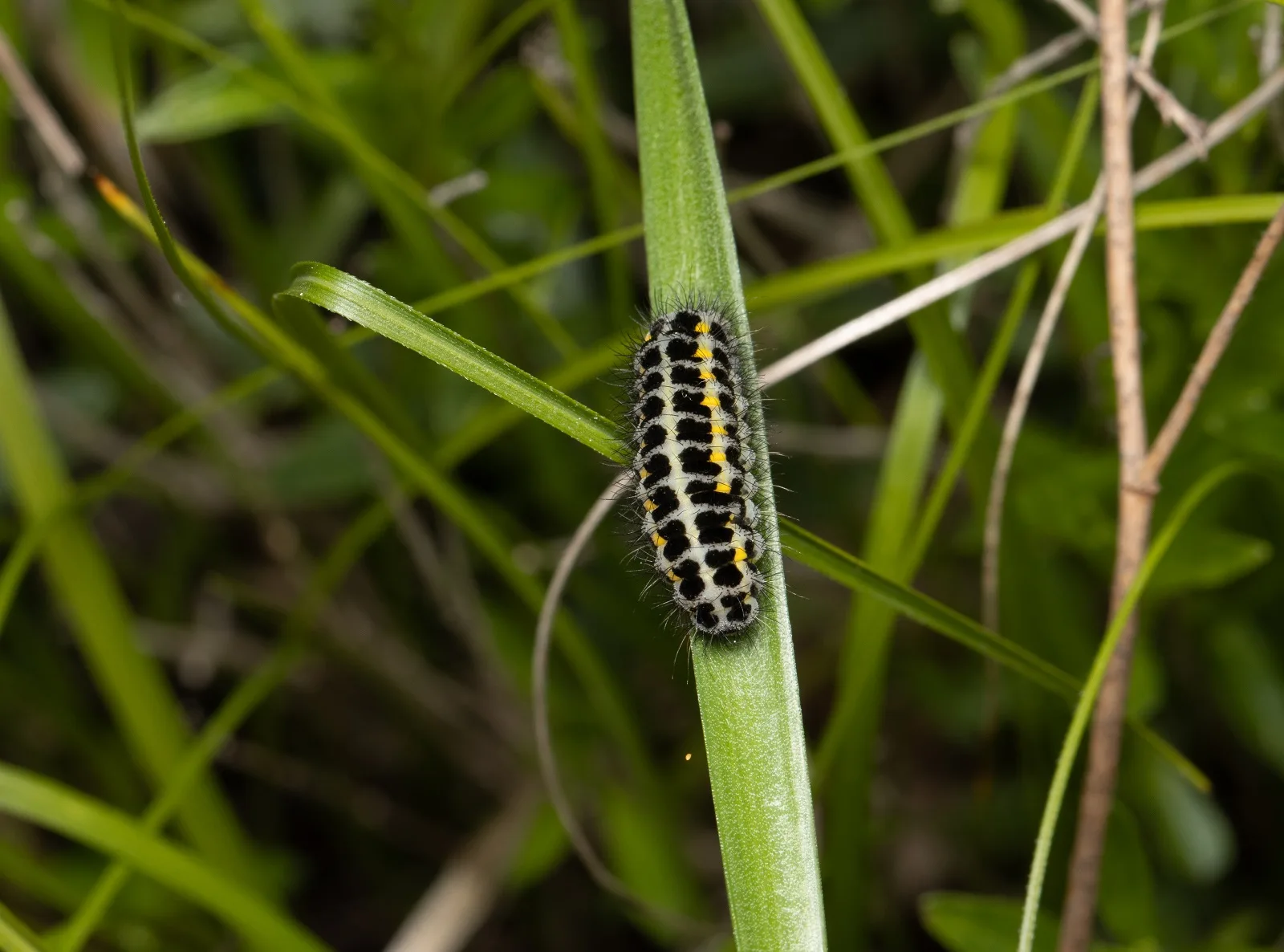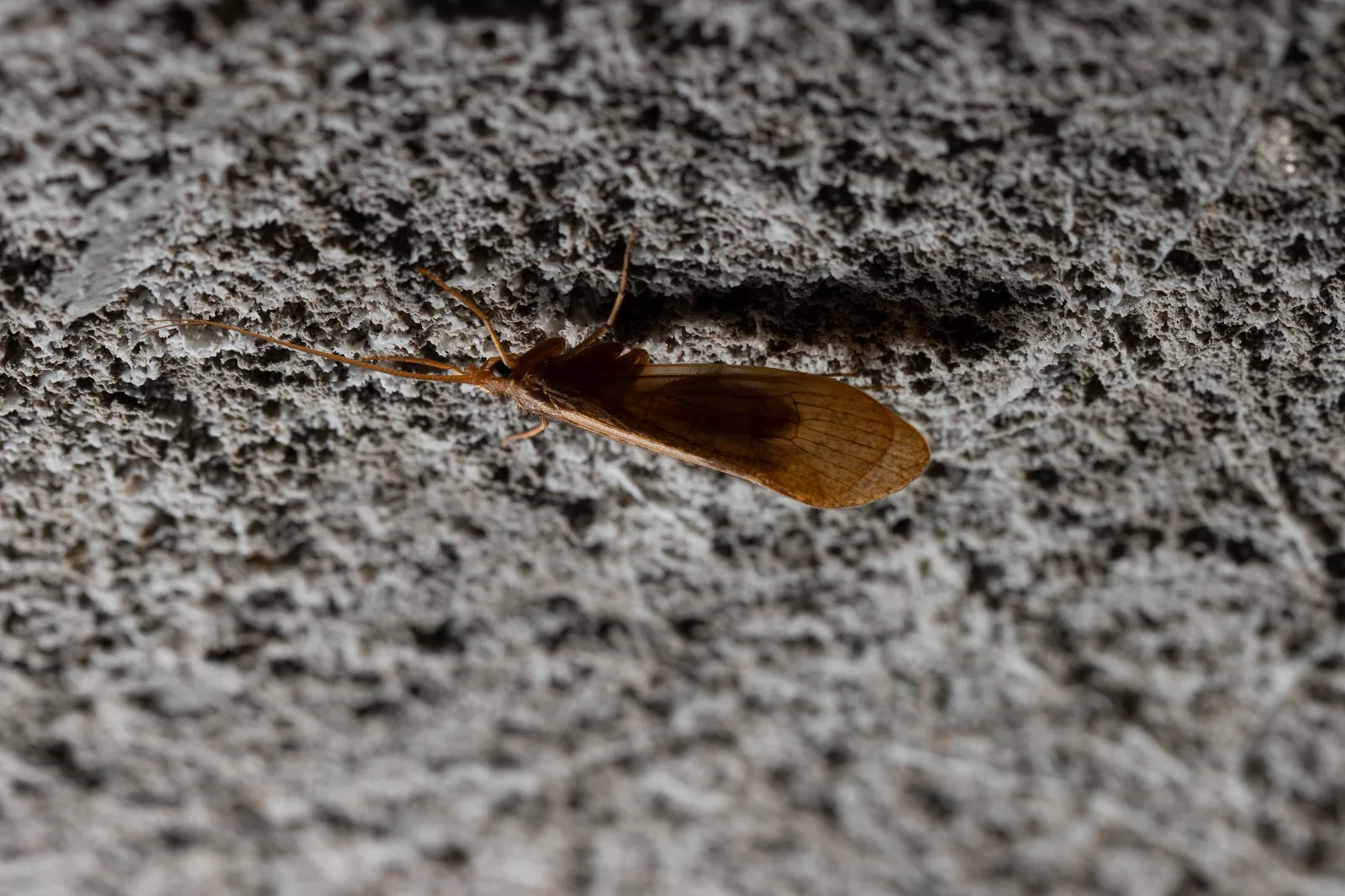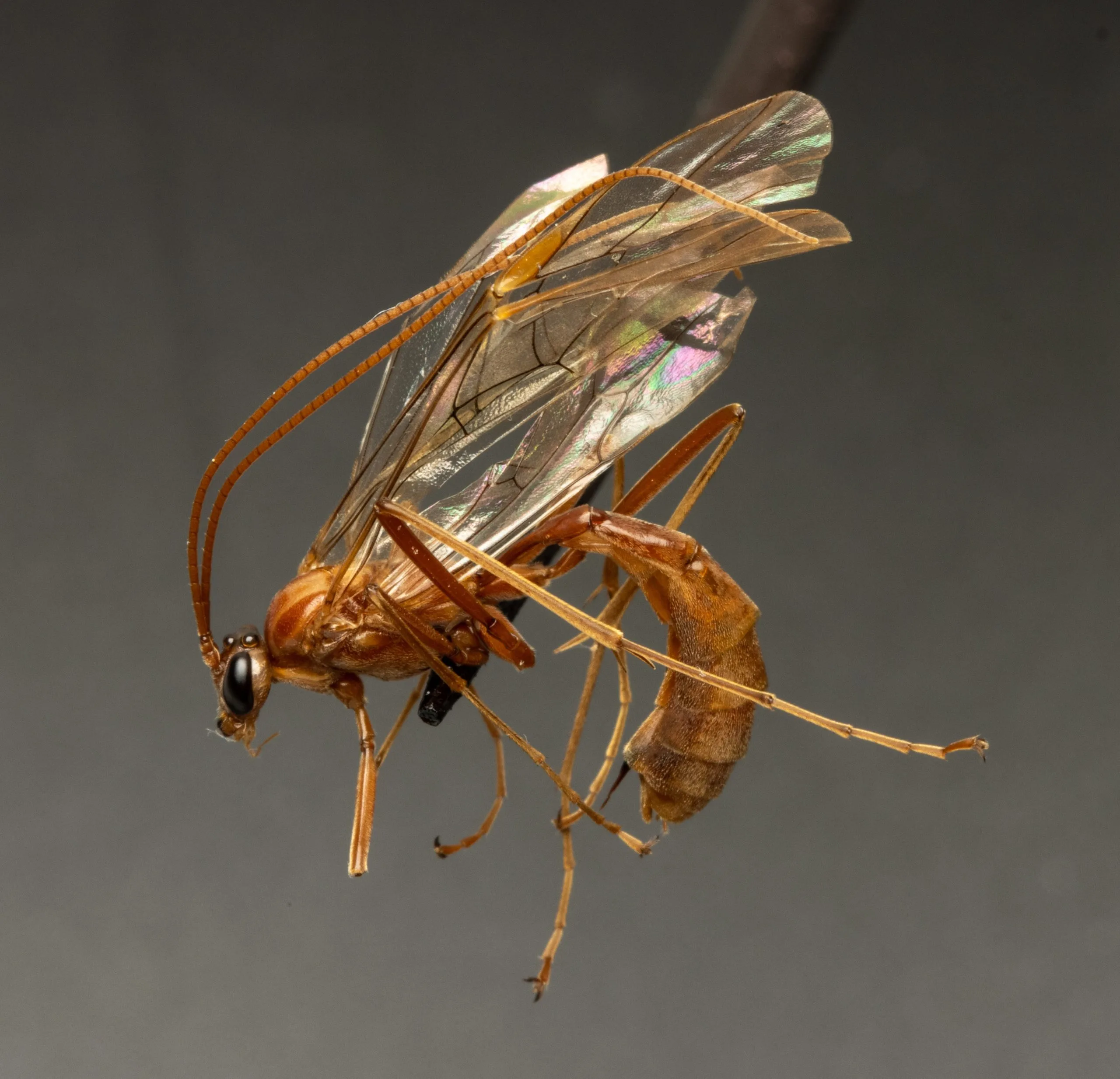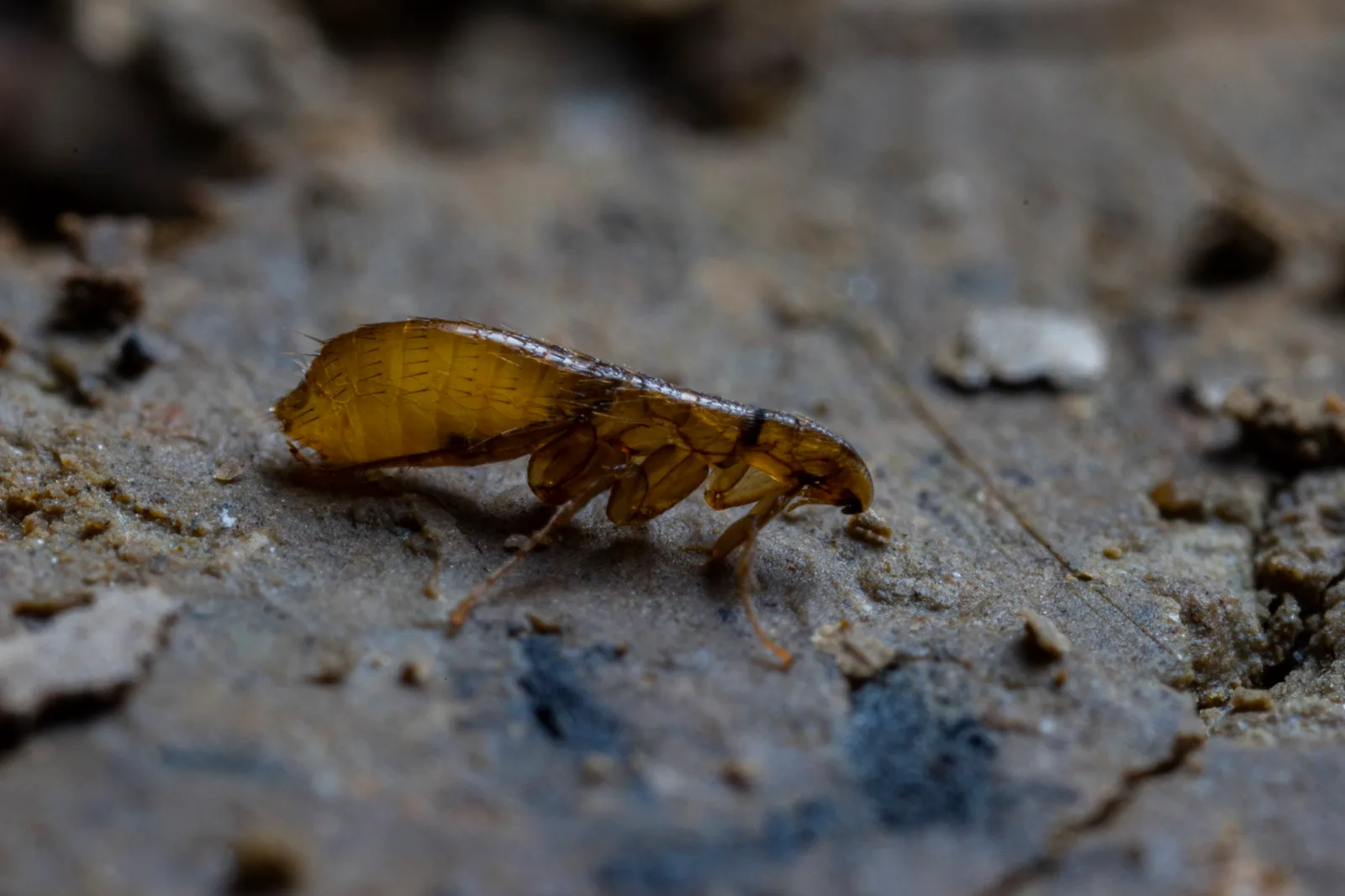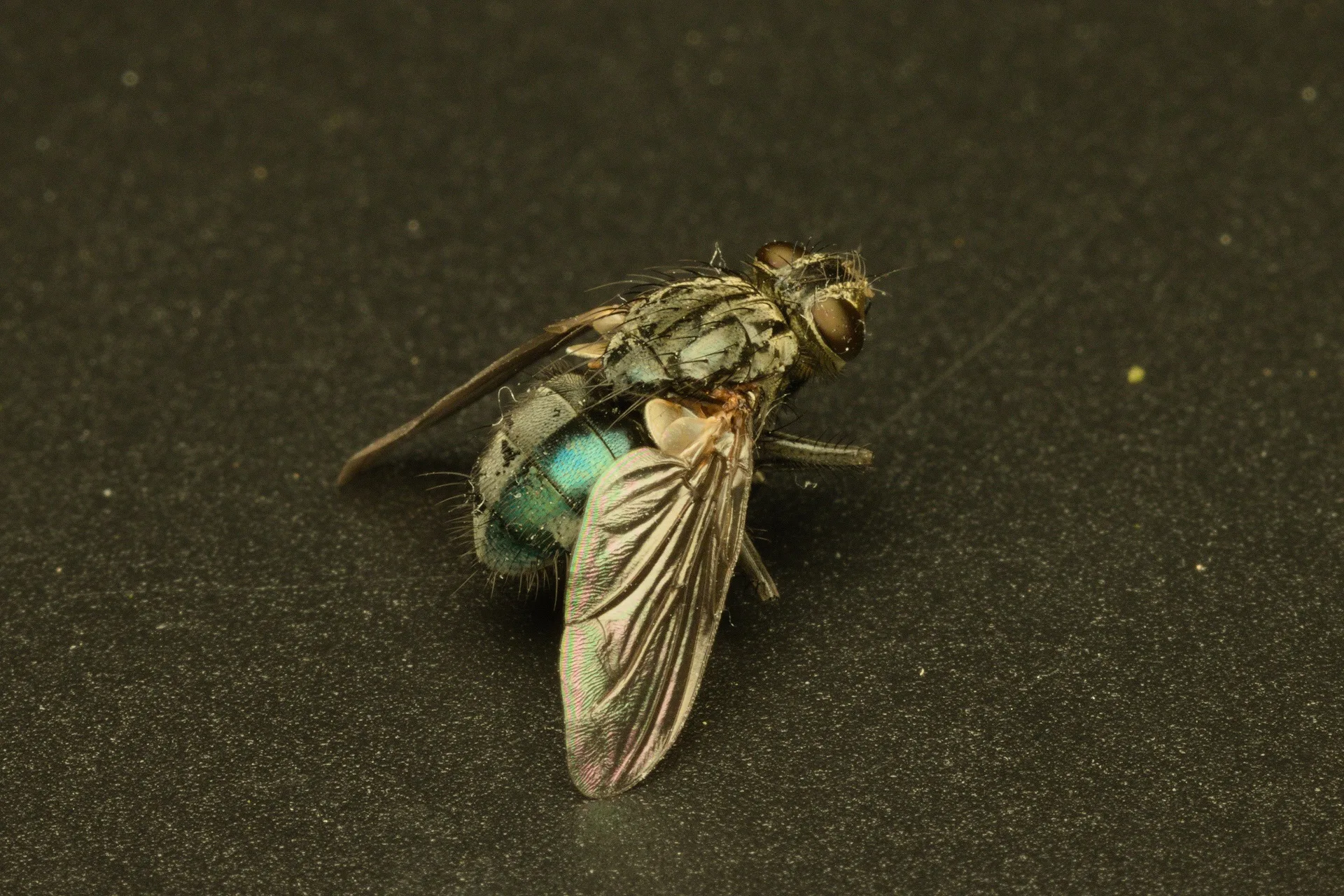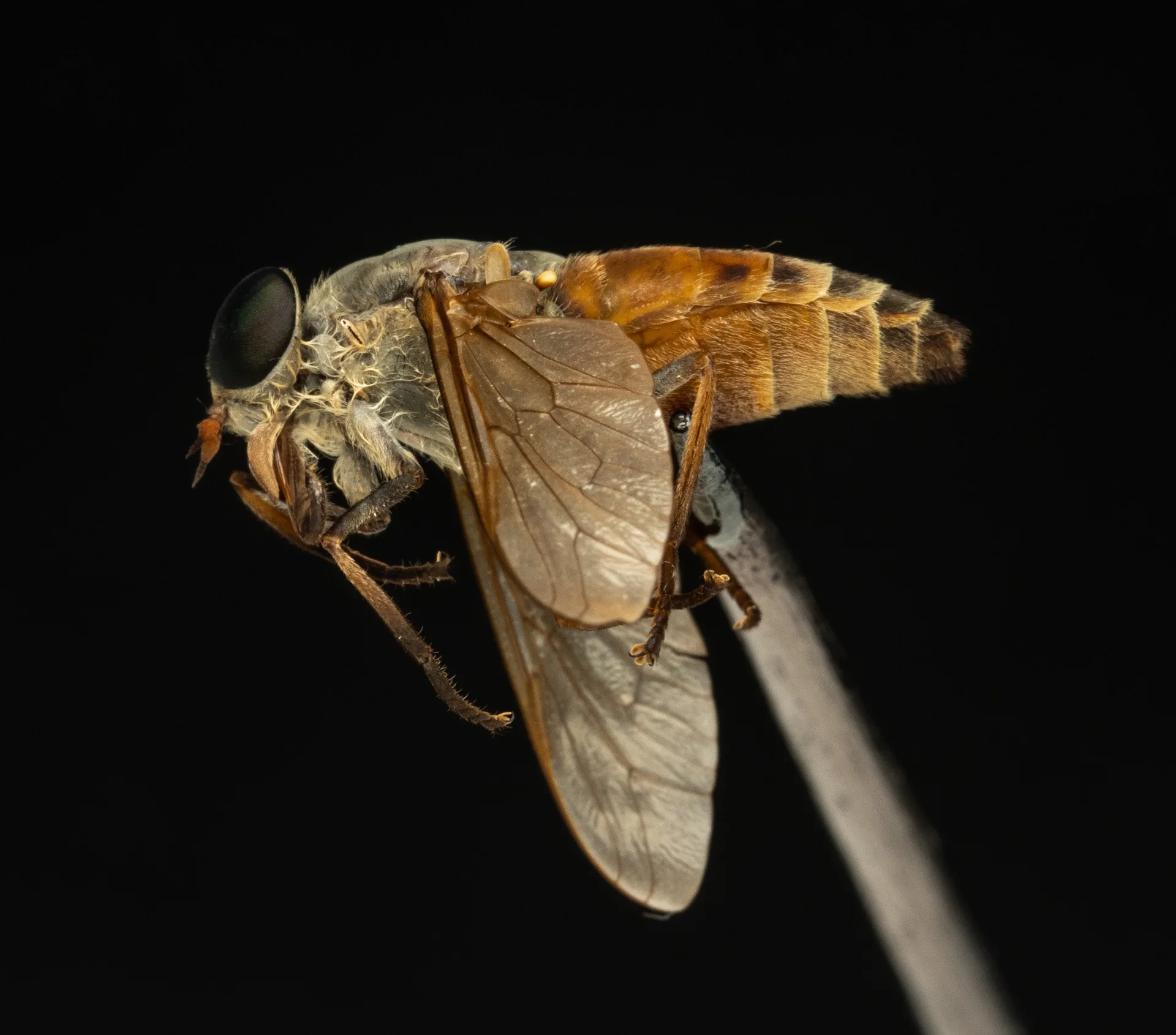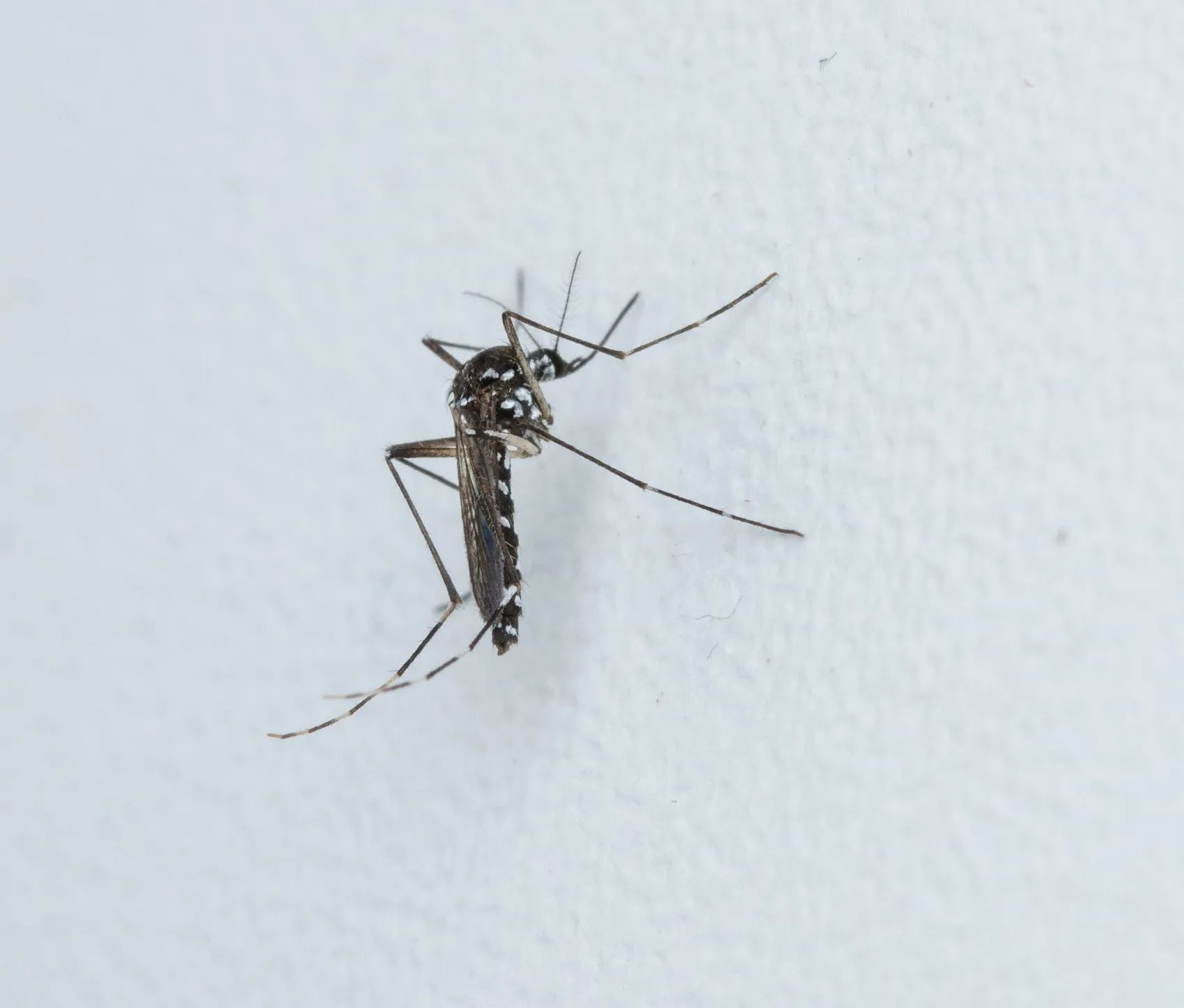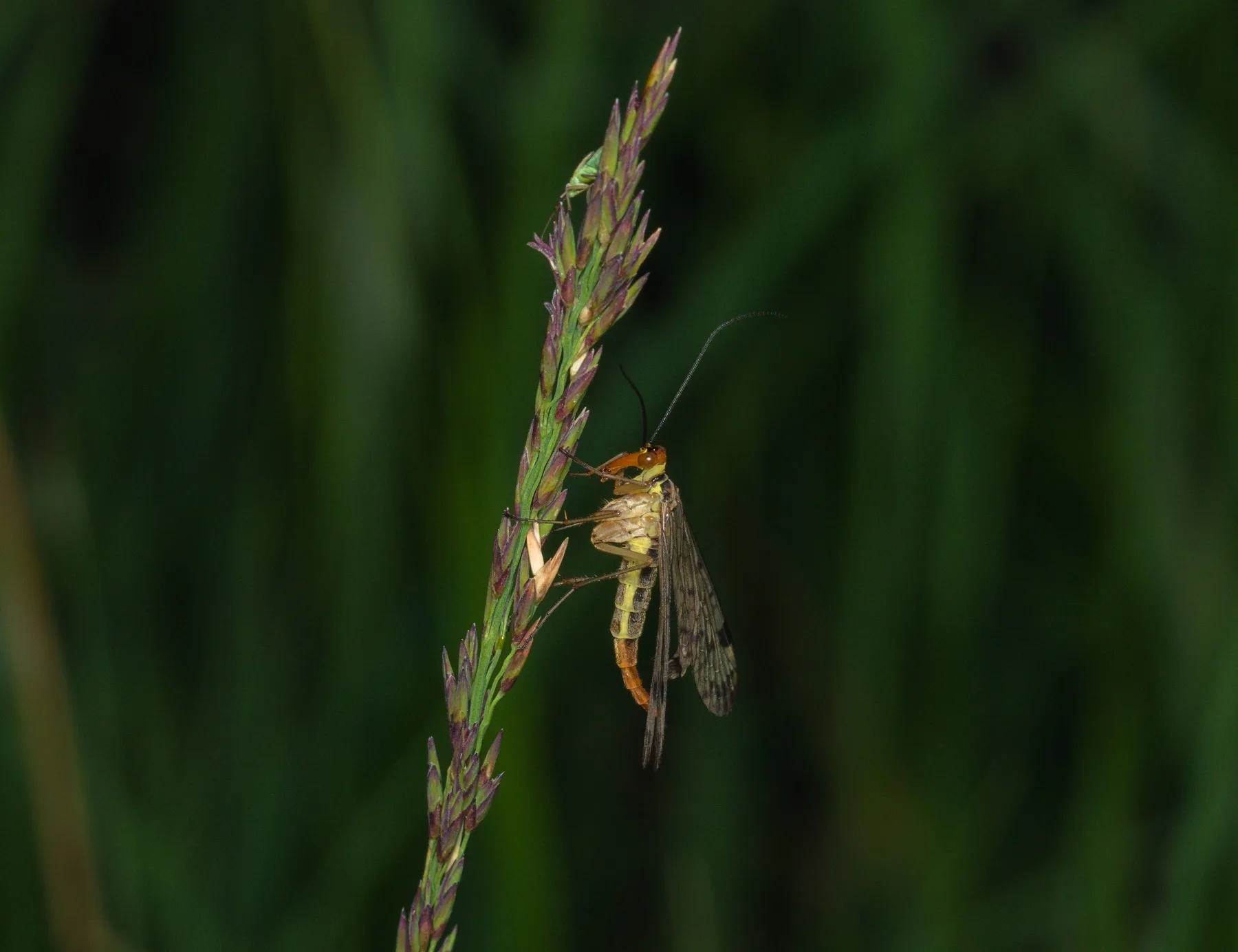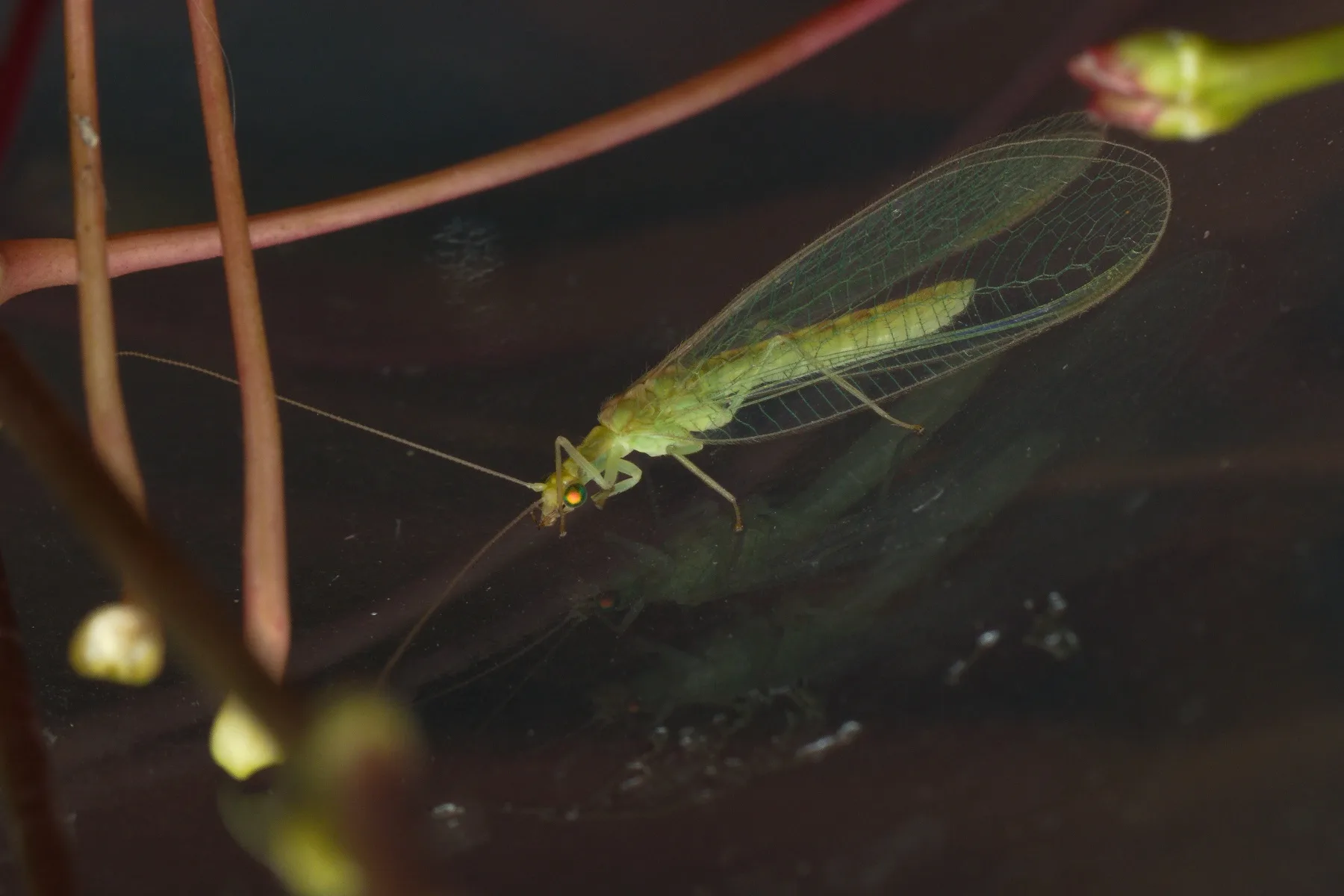- Insects
Tabanidae
Horse flies are relatively large flies with an average body length of about one centimetre. As in other insects their body consists of a head, thorax and abdomen.
On the head they have short, stocky antennae, extremely large and often brilliant green or brightly coloured compound eyes, and biting-sponging mouthparts with six sharp stylets for puncturing the tissues and a soft sponging labellum.
The thorax consists of three segments each carrying a pair of legs. On the thorax, they have only one pair of narrow membranous or dark-coloured wings, while the other pair is in the form of knob-like protrusions called halteres, which operate as mechanoreceptors crucial for the maintenance of flight balance.
The abdomen often has transverse light stripes on a dark background, which makes them resemble the stinging wasps.
The family of horse flies and deer flies includes about 4,500 species, which are distributed on all continents. Adults feed on nectar and pollen and can be important pollinators. Females of most species also require a blood meal from warm-blooded animals to successfully produce eggs. During feeding, the female creates a wound into the skin of the host with stylets of her mouthparts and uses the sponging labellum to suck the blood bleeding out of the wound. Feeding on blood they can transmit various diseases, especially in domestic animals.
Their larvae are legless, without distinct head capsule and live in moist soil or water, where they feed as predators. In the soil they also pupate. Females are attracted by the polarised reflection of light from bodies of water, which is why they often gather there.
More info
Related arthropods
Authors
- Urban Bogataj,
- Gregor Bračko,
- Teo Delič,
- Cene Fišer,
- Žiga Fišer,
- Rok Kostanjšek,
- Rudi Verovnik,
- Miloš Vittori,
- Valerija Zakšek.
Students Vito Ham, Vesna Jurjevič, Gaj Kušar, and Adrijan Samuel Stell Pičman also participated in the project.
